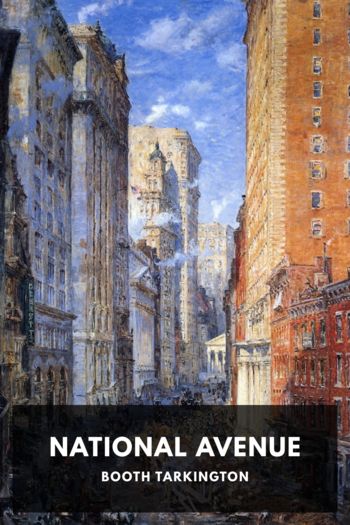Fateful Lightning: A New History of the Civil War & Reconstruction by Allen Guelzo (self help books to read TXT) 📕

Read free book «Fateful Lightning: A New History of the Civil War & Reconstruction by Allen Guelzo (self help books to read TXT) 📕» - read online or download for free at americanlibrarybooks.com
- Author: Allen Guelzo
Read book online «Fateful Lightning: A New History of the Civil War & Reconstruction by Allen Guelzo (self help books to read TXT) 📕». Author - Allen Guelzo
Simply listing the available literature on American slavery could easily consume a book on its own. Three exceptionally attractive general surveys of the history of slavery are Robert W. Fogel, Without Consent or Contract: The Rise and Fall of American Slavery (New York: W. W. Norton, 1989), Peter Kolchin’s American Slavery, 1619–1877 (New York: Hill and Wang, 1993), and Ira Berlin’s Many Thousands Gone: The First Two Centuries of Slavery in North America (Cambridge, MA: Harvard University Press, 1998). The best single-volume compilation of first-person accounts by African Americans of the slave experience in Slave Testimony: Two Centuries of Letters, Speeches, Interviews and Autobiographies, edited by John W. Blassingame (Baton Rouge: Louisiana State University Press, 1977). For this chapter, I have relied on the insights into Southern slavery offered by Albert Raboteau’s Slave Religion: The “Invisible Institution” in the Antebellum South (New York: Oxford University Press, 1978), John W. Blassingame’s The Slave Community: Plantation Life in the Antebellum South (New York: Oxford University Press, 1972), and Herbert Gutman, The Black Family in Slavery and Freedom (New York: Pantheon, 1976). Two historians have proven to be particularly significant for me, Eugene Genovese and James Oakes, and especially in Genovese’s The Political Economy of Slavery (New York: Pantheon, 1965), The World the Slaveholders Made (New York: Pantheon, 1969) and Roll, Jordan, Roll: The World the Slaves Made (New York: Pantheon, 1974), and Oakes’s The Ruling Race: A History of American Slaveholders (New York: Knopf, 1982) and Slavery and Freedom: An Interpretation of the Old South (New York: Knopf, 1990) —this, despite the fact that Genovese and Oakes represent two very different ways of interpreting slavery. The arguments of Southern slaveholders in defense of slavery have been collected and analyzed by Eugene Genovese and Elizabeth Fox-Genovese in The Mind of the Master Class: History and Faith in the Southern Slaveholders’ Worldview (New York: Cambridge University Press, 2005) and by Drew Faust, especially in A Sacred Circle: The Dilemma of the Intellectual in the Old South, 1840–1860 (Baltimore, MD: Johns Hopkins University Press, 1977) and her biography of a South Carolina governor, James Henry Hammond and the Old South: A Design for Mastery (Baton Rouge: Louisiana State University Press, 1982). John Majewski offers a powerful analysis of the paradox of a slave economy and its compatibility with liberal democracy in Modernizing a Slave Economy: The Economic Vision of the Confederate Nation (Chapel Hill: University of North Carolina Press, 2009). For the bird’s-eye view of the slave South, I have used William W. Freehling’s The Road to Disunion: Secessionists at Bay, 1776–1854 (New York: Oxford University Press, 1990). The abolitionist movement still lacks a single comprehensive narrative history, but it has a great biography of William Lloyd Garrison in Henry Mayer’s All on Fire: William Lloyd Garrison and the Abolition of Slavery (New York: St. Martin’s, 1998).
TWO. THE GAME OF BALANCES
The political history of the United States for the dozen years before the outbreak of the Civil War has enjoyed a remarkably rich crop of histories and biographies. For an overall narrative of the movement of North and South toward confrontation over slavery and its extension into the territories, Allan Nevins’s “Ordeal of the Union” volumes, Ordeal of the Union: The Fruits of Manifest Destiny, 1847–1852 and Ordeal of the Union: A House Dividing, 1852–1857 (New York: Scribner’s, 1947) are still without peer in terms of their scope and excitement. David Potter’s The Impending Crisis: 1848–1861 (New York: Harper and Row, 1976) offers a superb overview of these same events in a much shorter scope.
The politics of the Mexican War obviously deserve their own nod, and from this angle, I have found Charles G. Sellers’s two-volume James K. Polk (Princeton, NJ: Princeton University Press, 1957, 1966) and Paul Bergeron’s The Presidency of James K. Polk (Lawrence: University Press of Kansas, 1987) quite helpful. But the other aspects of the war have also been well covered in a number of newer books on this almost forgotten conflict by K. Jack Bauer, The Mexican-American War, 1846–1848 (New York: Macmillan, 1974), by Robert W. Johannsen, To the Halls of the Montezumas: The War with Mexico in the American Imagination (New York: Oxford University Press,





Comments (0)